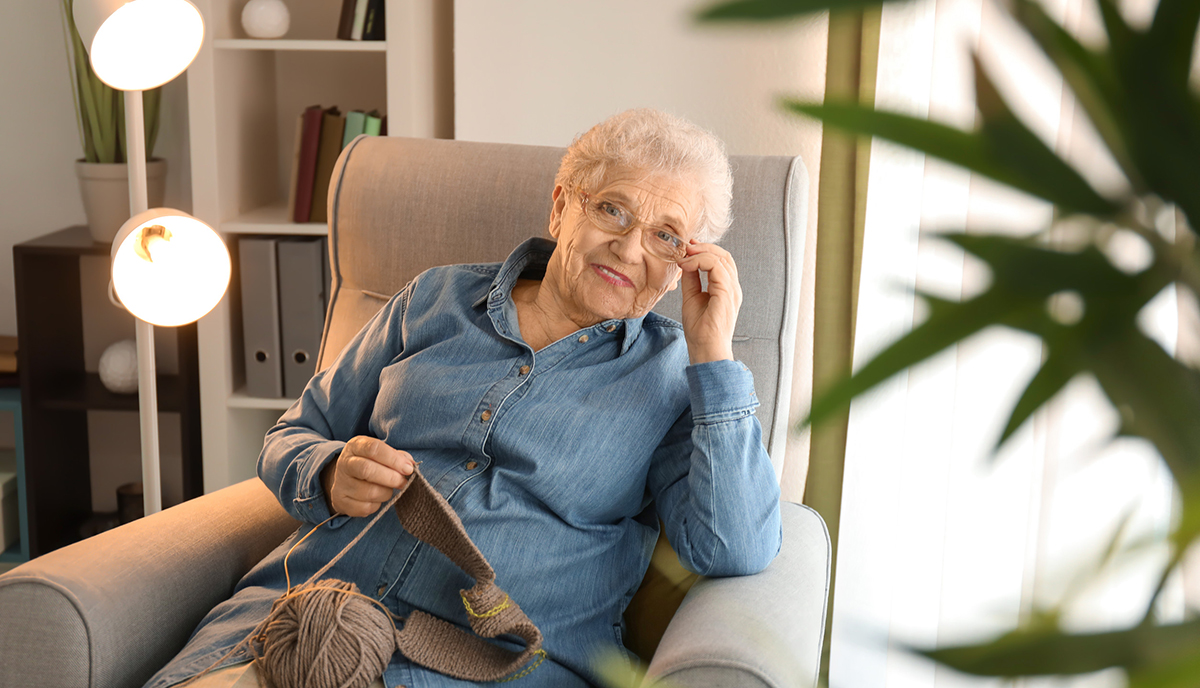Families with loved ones who have been diagnosed with dementia naturally seek ways to keep them in their homes for as long as possible. They feel that the familiar surroundings are more comforting to their loved one. After all, a house full of memories helps preserve that special connection to the past. And, given the uncertainty of the journey ahead, knowing their loved one is safe and sound in their own home is understandable.
But are they truly safe and sound?
As dementia progresses, it can significantly affect both cognitive function and mobility. While keeping a loved one at home may feel comforting, it may come at the cost of their safety and well-being. Everyday items that once seemed harmless—like a bathroom rug, stone patio steps, the kitchen stove that cooked so many family meals, or a cherished collection of glass ornaments—can quickly become serious hazards. Recognizing these risks is an important first step in ensuring a familiar, yet safe, environment.
The AFA (Alzheimer’s Foundation of America) and the National Institute on Aging have put together insights and tips on making a home safer and more dementia friendly. We’ve re-grouped some of their key tips into four areas and summarized them as follows:
Physical safety
- Tripping hazards removed, such as throw rugs, electric cords, dog toys, small furniture in walkways.
- Padding added to tables and chairs to soften sharp edges.
- Water temperature set no higher than 120 degrees to avoid burns.
- Expiration date labels on food containers, checked regularly to avoid potential food poisoning.
- Applicances with sensors to automatically shut-off when they get too hot for too long.
- Items removed from top shelves to avoid the need to reach or use a stool, making it easy to retrieve and return them.
- Tub and sink sensors that will shut off water when it reaches a certain level and/or temperature.
- Handrails and ramps installed as well as door handles instead of round knobs for easier grip.
- Safety locks added to cabinets and drawers containing medications, cleaning supplies, and any other potentially toxic or hazardous items.
Cognition aids
- Clocks mounted in line of vision on the wall with extra large numbers that are easy to read.
- Medications containers programmed to automatically open and close when the medications have been taken.
- Sound-activated assistants (Alexa, Siri, etc.) that can take direction and issue reminders.
- Color coding to identify each room in the house and help identify items such as plates, cups, etc. Walls should be lighter than the floor to create contrast in hallways. A bright colored wreath can be added to the front door to differentiate their home from others.
Personal comfort
- Adaptive dining aids, like plate risers, which elevate dishes to bring them closer to face level making eating easier and help prevent food from falling.
- Weighted utensils to make it easier for individuals with Parkinson’s or other conditions causing tremors to hold and use.
- Absorbent pads inserted into washable chair cushions for incidents of incontinence.
Emotional support
- Memorabilia presented in creative ways to help spark memories and encourage conversation with visiting family and friends. Consider framed posters of old magazine covers or photos from their past. Large electronic photo frames can display an array of family photos.
- Limited number of mirrors throughout the home. While a medicine cabinet mirror may be necessary, large decorative mirrors in other rooms and hallways can create confusion and cause anxiety.
- Familiar touches, such as knick knacks, comfortable pillows, quilts, or other items that can be cleaned and retained.
- Fresh flowers and/or plants to create a pleasant sensory experience. However, make sure they are not toxic if ingested.
- Strategic use of colors, such as blue, green and even pink, to create an environment that is calming and peaceful.
- Apps that can be used on an iPad, computer, or TV to enable instant connection to family and friends.
Following these tips will help make your loved one’s home safer and more dementia friendly, easing their daily routines and giving your family greater peace of mind, especially when you can’t be there. It is also important to recognize that there may come a time when their cognitive and physical decline progresses beyond what can be managed at home, even with your best efforts. When that time comes, seeking professional memory care becomes not just necessary, but essential for their safety and well-being.
We encourage you to reach out to any of our Anthem Memory Care communities for additional tips and resources to help you improve the quality of life for your loved one and your family as you take this journey together. We are always ready to help!
Since 2009,
Anthem Memory Care has been a haven for loved ones who need memory and dementia care. Our experienced, professional team expands over 20 communities with more than 1,300 suites designed for memory care needs. Each community offers numerous helpful amenities and resources, creating a nurturing and supportive environment that caters to the needs of our residents. Along with compassionate and personalized
memory care, we provide services in areas of wellness, health, and safety. We invite you to explore our services or contact us today if you have any questions.
